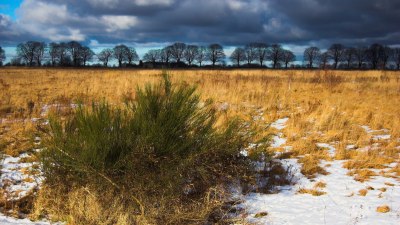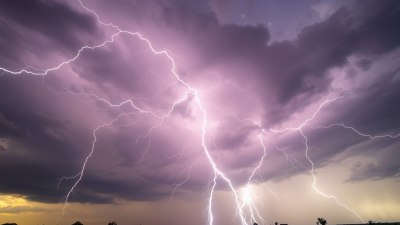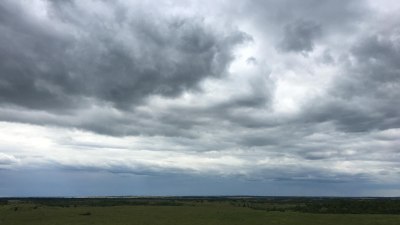How Temperature Inversions Trap Pollution and Create Fog Domes
Explore how temperature inversions create fog domes and trap pollution, affecting air quality in urban and rural areas.

Temperature inversions are a fascinating atmospheric phenomenon that significantly impact both air quality and weather conditions. These inversions occur when a layer of warm air traps cooler air at the ground level, inhibiting the normal vertical mixing of the atmosphere. This can lead to severe implications for pollution levels and weather patterns, particularly in urban settings.
The atmosphere typically experiences a temperature decrease with altitude. However, during an inversion, this pattern is reversed, leading to the creation of a stable layer where pollutants and moisture can accumulate. Understanding the mechanisms behind temperature inversions is crucial to grasp their effects on air quality and the formation of fog domes.
What Are Temperature Inversions?
Temperature inversions occur when a layer of warm air develops above cooler air closer to the ground. This phenomenon can happen during certain weather conditions, particularly at night or early morning when the ground cools rapidly. The inversion layer acts as a barrier, preventing the upward movement of air and the dispersion of pollutants released from vehicles, industry, and other sources.
Inversions are most common in valleys and areas surrounded by mountains where cold air can settle, creating the perfect environment for trapping pollutants. The term 'inversion' describes this reversal of the normal temperature gradient, which typically allows warmer air to rise and disperse. In these conditions, pollutants emitted into the lower atmosphere are confined to a thinner layer, resulting in higher concentrations at ground level.
The Formation of Fog Domes
Fog domes are another phenomenon often associated with temperature inversions, characterized by a bank of fog forming beneath the warm air layer. When air near the surface cools sufficiently and reaches saturation, it can lead to the formation of fog. This is especially common during morning hours when temperatures drop overnight.
Fog domes are particularly problematic in urban areas, where they can reduce visibility significantly, leading to hazardous driving conditions and impacting daily activities. The interaction between the ground-level cold air and the warm air aloft supports the formation of fog, which becomes more pronounced when humidity levels rise. The presence of pollutants can also contribute to the density and persistence of fog, creating a cycle that worsens air quality.
Causes of Temperature Inversions
Several factors contribute to the formation of temperature inversions. The most common include:
- Radiational Cooling: During clear nights, the ground loses heat rapidly by radiation. This cooling causes the air in contact with the ground to cool as well, while warmer air remains above.
- Topography: Areas like valleys can experience inversions because cold air sinks and gets trapped by surrounding hills or mountains.
- Snow Cover: Snow-covered surfaces can cool the air above them more effectively than surrounding areas, leading to inversions.
- High-Pressure Systems: These systems can lead to subsidence (the downward movement of air), which compresses the air and creates stable conditions for an inversion.
Impacts of Temperature Inversions on Air Quality
The most concerning consequence of temperature inversions is their role in trapping air pollution. During an inversion, pollutants such as carbon monoxide, nitrogen dioxide, and particulate matter accumulate in the warm air layer above the cooler air at ground level. This leads to increased concentrations of harmful substances that can pose risks to human health.
In urban areas, where traffic and industrial activity contribute significantly to emissions, the impacts of inversions are particularly pronounced. Prolonged inversions can lead to smog events, which are characterized by reduced visibility and respiratory problems among the population. Vulnerable groups, such as children and the elderly, are especially at risk during these conditions.
Weather Patterns and Temperature Inversions
Temperature inversions can also influence local weather patterns. The presence of a strong inversion layer can suppress cloud formation and inhibit precipitation. This phenomenon can lead to prolonged dry spells in affected areas. In some regions, this can exacerbate drought conditions and negatively impact agriculture.
Moreover, the lack of vertical mixing in the atmosphere due to an inversion can result in stagnant air conditions. These stagnant conditions may lead to persistent fog and increased air pollution levels. In winter, this can mean colder than normal temperatures at ground level, as the lower air layer does not warm up adequately during the day.
Examples of Temperature Inversions in Real Life
One of the most notable examples of temperature inversions occurs in the Los Angeles Basin. The complex topography and climate dynamics of the region make it susceptible to frequent inversions, especially during the summer months. The combination of high emissions from vehicles and industry, along with stable atmospheric conditions, often leads to significant smog formation in the area.
Similarly, cities like Beijing and Mexico City have experienced severe air quality issues due to temperature inversions. In winter, temperature inversions can trap pollutants close to the ground, leading to hazardous air quality levels that have serious health implications. These real-life examples highlight the importance of understanding and monitoring temperature inversions in urban environments.
Mitigation Strategies
To combat the negative effects of temperature inversions on air quality, several mitigation strategies can be employed. Monitoring air quality continuously can help authorities issue warnings during high pollution days caused by inversions. Encouraging public transportation use and implementing stricter emissions regulations can also be effective.
Urban planning plays a significant role in reducing the frequency and impact of inversions. Strategies such as increasing green spaces, which can help improve air quality, and designing cities to enhance air circulation can minimize the effects of temperature inversions. Furthermore, promoting awareness about the risks associated with inversions can empower residents to take actions that contribute to better air quality.
Temperature inversions are a key factor in understanding air quality dynamics and weather patterns in various regions. They trap pollutants and contribute to the formation of fog domes, leading to significant challenges for public health and environmental management. Ongoing research and innovative strategies are essential for addressing the impacts of these inversions and ensuring cleaner air for communities worldwide.











